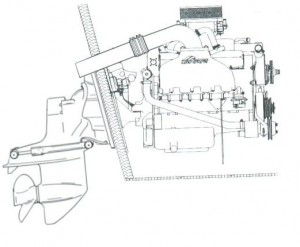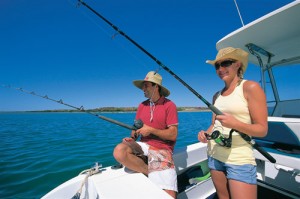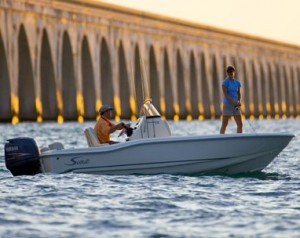Save on Fuel with These Basic Tips

As most small boat owners would quickly admit, a large portion of their recreational budget goes toward fuel prices. After spending enough time on the lake, one begins to figure out a few veteran maneuvers that help cut down on gas and oil costs. First, a point we’ve tried to drive home many times in the past on this blog: Perform basic maintenance on your outboard engine after every trip. That way you’ll catch any developing problems in their infancy and nip them in the bud before they become expensive.
Don’t simply take it for granted that your boat’s propeller is in perfect working order. Inspect the prop before putting your vessel in the water. If it has visible scrapes or nicks along the blades’ leading edges, you could be losing efficiency moving through the water. The laws of physics dictate that a heavier boat will require more energy just to get around. Ditch any excess gear before leaving the dock and you could end up saving significantly on outboard motor oil.
Pay attention to the weather report as water conditions often dictate how much energy your motor expends. Rough, choppy water is a pain to plow through, and a calm, placid lake makes for smooth sailing. Finally, take notes over the course of a few fishing trips. Each time, run the motor at a different speed and calculate your efficiency. Every boat has a target speed where the engine performs at the most efficient level possible.






 Today’s boaters could be forgiven for putting the past out of mind. As recently as the 1990s, federal rules for outboard engine efficiency were much less stringent – to the point that pollution became a problem and the small boating industry became something of a scapegoat for environmental groups. Around 1996, the marine industry and the Environmental Protection Agency teamed up to create and enforce fuel standards.
Today’s boaters could be forgiven for putting the past out of mind. As recently as the 1990s, federal rules for outboard engine efficiency were much less stringent – to the point that pollution became a problem and the small boating industry became something of a scapegoat for environmental groups. Around 1996, the marine industry and the Environmental Protection Agency teamed up to create and enforce fuel standards.

 Over the last few months, we’ve visited and revisited the threat posed by ethanol additives to the small boat industry. Specifically, ethanol lobbyists are seeking a waiver to sell E15 – that’s gas with a 15 percent concentration of ethanol – or even E20 as a standard fuel mixture for marine engines. As many boaters are aware, most small vessels on the market and in the water today are ill-equipped to deal with such high concentrations of the additive.
Over the last few months, we’ve visited and revisited the threat posed by ethanol additives to the small boat industry. Specifically, ethanol lobbyists are seeking a waiver to sell E15 – that’s gas with a 15 percent concentration of ethanol – or even E20 as a standard fuel mixture for marine engines. As many boaters are aware, most small vessels on the market and in the water today are ill-equipped to deal with such high concentrations of the additive.
 With technology advancing by leaps and bounds in recent years, allowing anglers to pinpoint their location, route, and the best places to find fish, it should come as no surprise that reliable batteries and charging systems are a top priority. Many boaters rely on GPS, fish finder technology and VHF radios for communication; none of this would be possible without the juice required to power the whole enterprise.
With technology advancing by leaps and bounds in recent years, allowing anglers to pinpoint their location, route, and the best places to find fish, it should come as no surprise that reliable batteries and charging systems are a top priority. Many boaters rely on GPS, fish finder technology and VHF radios for communication; none of this would be possible without the juice required to power the whole enterprise.


